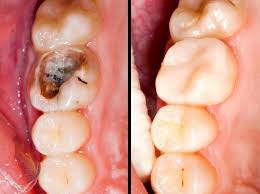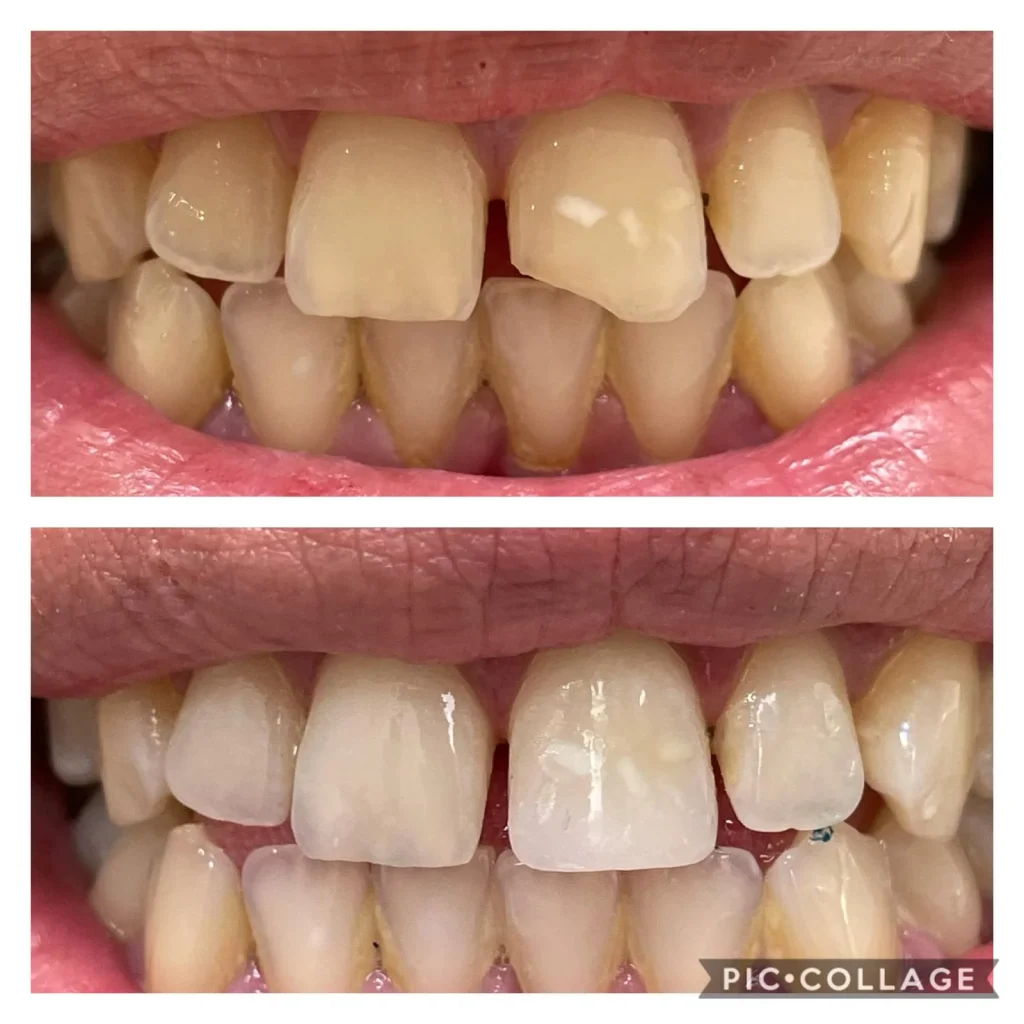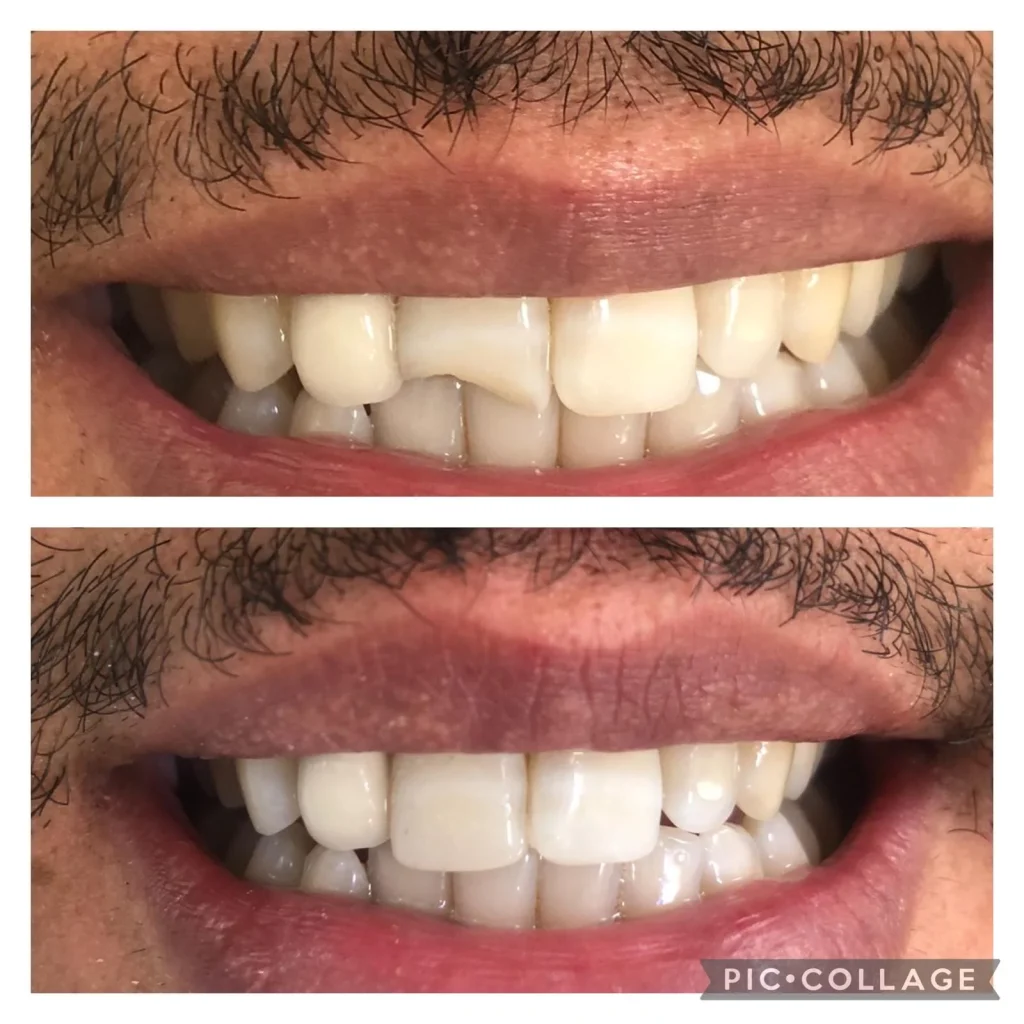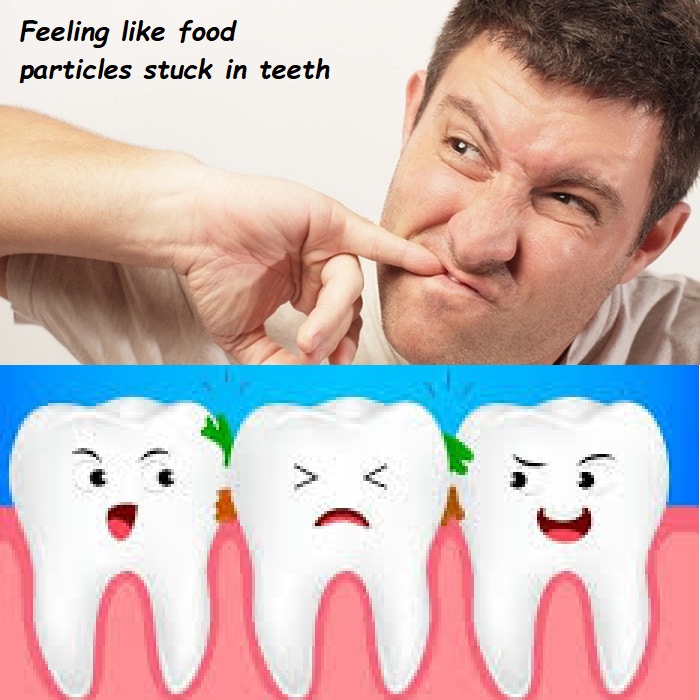why do my teeth hurt when i eat sweets

How to Stop My Teeth from Hurting When I Eat Sweets?
Experiencing tooth pain when consuming sweets can be indicative of underlying dental issues such as sensitivity or decay. Addressing this discomfort involves understanding the causes and implementing effective strategies to alleviate the pain.
Causes
- Tooth Sensitivity:
- Description: Exposed dentin, typically from enamel erosion or gum recession, can lead to sensitivity.
- Impact: Sweet foods can trigger sharp, temporary pain due to their high sugar content and osmotic pressure.
- Tooth Decay:
- Description: Consumption of sugary foods without proper oral hygiene can lead to tooth decay.
- Impact: Cavities can develop, causing sensitivity and pain, especially when exposed to sweets.
Solutions
- Use Desensitizing Toothpaste:
- How It Works: Desensitizing toothpaste contains compounds that block pain signals from reaching the nerve endings in the teeth.
- Application: Use regularly, preferably with a soft-bristled toothbrush, to reduce sensitivity over time.
- Maintain Good Oral Hygiene:
- Brushing: Brush your teeth twice daily with fluoride toothpaste to remove plaque and food particles.
- Flossing: Clean between teeth daily to prevent decay and gum disease.
- Limit Sweet Consumption:
- Moderation: Reduce intake of sugary foods and drinks, especially between meals.
- Rinse: Rinse your mouth with water after consuming sweets to minimize sugar exposure.
- Professional Treatment:
- Fluoride Application: Dentists can apply fluoride varnish or gel to strengthen enamel and reduce sensitivity.
- Sealants: Sealants can protect teeth from decay and reduce sensitivity, especially on molars.
Why Are My Teeth Suddenly Sensitive to Sugar?
Sudden sensitivity to sugar can stem from various dental issues that compromise enamel protection or expose dentin, the sensitive layer beneath. Understanding the underlying causes can help manage and alleviate this discomfort effectively.
Causes
- Enamel Erosion:
- Description: Acidic foods and drinks, poor oral hygiene, or brushing too hard can wear down enamel.
- Impact: Exposed dentin can lead to sensitivity when consuming sugary foods, as the sugar penetrates the porous dentin and irritates nerve endings.
- Gum Recession:
- Description: Receding gums expose the roots of teeth, which lack protective enamel.
- Impact: Roots are more sensitive to sugar and temperature changes, causing discomfort when eating sweets.
Solutions
- Modify Oral Hygiene Practices:
- Gentle Brushing: Use a soft-bristled toothbrush and gentle, circular motions to clean teeth without damaging enamel.
- Avoid Acidic Foods: Minimize consumption of acidic foods and drinks that can contribute to enamel erosion.
- Use Desensitizing Products:
- Topical Treatments: Apply desensitizing toothpaste or fluoride varnish as recommended by your dentist to reduce sensitivity.
- Dietary Adjustments:
- Limit Sugar Intake: Reduce consumption of sugary foods and drinks, especially those with high acid content.
- Drink Water: Rinse your mouth with water after eating sweets to neutralize acids and minimize sugar exposure.
- Professional Care:
- Dental Consultation: Visit your dentist for an evaluation and personalized treatment plan, which may include fluoride treatments or dental sealants.
Why Do My Teeth Hurt When I Eat Chocolate and Sweets?
Experiencing tooth pain when consuming chocolate and sweets can be a sign of underlying dental issues such as sensitivity or decay. Addressing this discomfort involves understanding the causes and implementing effective strategies to alleviate the pain.
Causes
- Tooth Sensitivity:
- Description: Exposed dentin, typically from enamel erosion or gum recession, can lead to sensitivity.
- Impact: Sugary and acidic components in chocolate and sweets can trigger sharp, temporary pain due to their high sugar content and osmotic pressure.
- Enamel Erosion:
- Description: Acidic foods and drinks, poor oral hygiene, or brushing too hard can wear down enamel.
- Impact: Exposed dentin can lead to sensitivity when consuming chocolate and sweets, as the sugar penetrates the porous dentin and irritates nerve endings.
Solutions
- Use Desensitizing Toothpaste:
- How It Works: Desensitizing toothpaste contains compounds that block pain signals from reaching the nerve endings in the teeth.
- Application: Use regularly, preferably with a soft-bristled toothbrush, to reduce sensitivity over time.
- Maintain Good Oral Hygiene:
- Brushing: Brush your teeth twice daily with fluoride toothpaste to remove plaque and food particles.
- Flossing: Clean between teeth daily to prevent decay and gum disease.
- Limit Sweet Consumption:
- Moderation: Reduce intake of sugary foods and drinks, especially between meals.
- Rinse: Rinse your mouth with water after consuming chocolate and sweets to minimize sugar exposure.
- Professional Treatment:
- Fluoride Application: Dentists can apply fluoride varnish or gel to strengthen enamel and reduce sensitivity.
- Sealants: Sealants can protect teeth from decay and reduce sensitivity, especially on molars.
How to Repair Tooth Sensitivity?
Repairing tooth sensitivity involves addressing the underlying causes and implementing strategies to strengthen enamel, reduce exposure to irritants, and alleviate discomfort effectively.
Causes
- Enamel Erosion:
- Description: Acidic foods and drinks, poor oral hygiene, or aggressive brushing can wear down enamel.
- Impact: Exposed dentin leads to sensitivity when exposed to cold, hot, sweet, or acidic stimuli.
- Gum Recession:
- Description: Receding gums expose the tooth roots, which lack protective enamel.
- Impact: Roots are sensitive to temperature and sugar, causing discomfort when eating or drinking.
Solutions
- Desensitizing Toothpaste:
- Application: Use toothpaste formulated for sensitive teeth to block pain signals and reduce sensitivity over time.
- Regular Use: Brush gently with desensitizing toothpaste twice daily for effective results.
- Fluoride Treatments:
- Professional Application: Dentists can apply fluoride varnish or gel to strengthen enamel and reduce sensitivity.
- Customized Care: Follow your dentist’s recommendations for fluoride treatment frequency based on your oral health needs.
- Protective Measures:
- Sealants: Dental sealants can protect exposed tooth surfaces and reduce sensitivity, especially on molars prone to decay.
- Orthodontic Adjustments: Addressing misalignment or bite issues can alleviate pressure and reduce tooth sensitivity.
- Dietary Adjustments:
- Limit Acidic Foods: Reduce consumption of acidic foods and drinks that contribute to enamel erosion and sensitivity.
- Moderate Sugar Intake: Minimize consumption of sugary foods and drinks to prevent tooth decay and sensitivity.
- Routine Dental Care:
- Regular Check-Ups: Schedule dental visits for professional cleanings and oral exams to monitor and address sensitivity issues.
- Personalized Advice: Consult with your dentist for personalized recommendations on managing and repairing tooth sensitivity.
How Do You Fix Sugar-Damaged Teeth?
Repairing sugar-damaged teeth involves addressing the effects of sugar on enamel and dentin, restoring tooth structure, and preventing further decay through comprehensive dental care.
Causes
- Enamel Erosion:
- Description: Acids produced by bacteria in plaque attack tooth enamel, leading to erosion.
- Impact: Sugar accelerates acid production, weakening enamel and increasing susceptibility to decay.
- Tooth Decay:
- Description: Sugary foods and drinks fuel bacteria in plaque, producing acids that weaken enamel and cause decay.
- Impact: Untreated decay progresses to cavities, requiring dental intervention to repair and restore teeth.
Solutions
- Professional Dental Treatment:
- Fillings: Dentists remove decayed tooth structure and fill cavities with composite resin or amalgam to restore function and prevent further damage.
- Crowns: Severely damaged teeth may require crowns to cover and protect weakened enamel.
- Fluoride Application:
- Professional Treatment: Dentists apply fluoride varnish or gel to remineralize enamel, strengthening tooth structure and reducing sensitivity.
- Root Canal Therapy:
- Procedure: When decay reaches the tooth pulp, root canal therapy removes infected tissue and seals the tooth to restore function and prevent tooth loss.
- Preventive Care:
- Routine Cleanings: Schedule regular dental cleanings to remove plaque and tartar buildup, reducing the risk of decay.
- Sealants: Protective sealants can shield vulnerable tooth surfaces, preventing sugar and bacteria from causing damage.
- Oral Hygiene Practices:
- Brushing and Flossing: Clean teeth twice daily with fluoride toothpaste and floss to remove plaque and food particles.
- Limit Sugar Intake: Reduce consumption of sugary foods and drinks, especially between meals, to minimize acid exposure.









